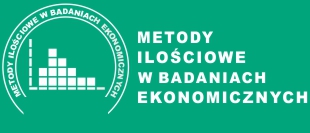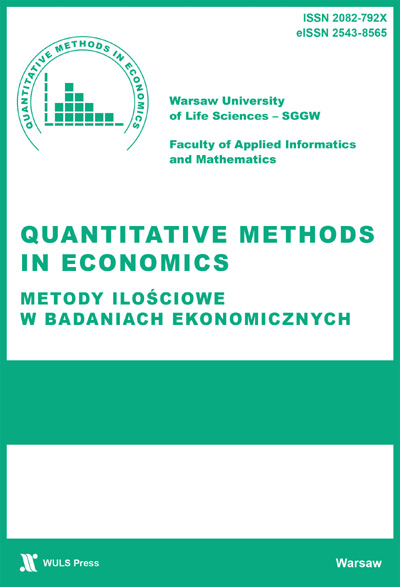Main Article Content
Most sales managers struggle with achieving high lead conversion, key to lowering marketing costs and improving sales efficiency. Existing research emphasizes costly large-scale methods, often inaccessible to SMEs. Meanwhile, IT SMEs in B2B face numerous low-value leads without predictive support. This study proves that AI (AutoML on Google Cloud) can cost-effectively predict sales opportunities. Using 1000 historical leads, it demonstrates accurate predictions, offering SMEs a practical tool and paving the way for further research.
Article Details
Bohanec M., Kljajić-Borštnar M., Robnik-Šikonja M. (2017) Explaining Machine Learning Models in Sales Predictions. Expert Systems with Applications, 71(1), 416-428. https://doi.org/10.1016/j.eswa.2016.11.010 (Crossref)
Civelek M., Ključnikov A., Fialova V., Folvarčná A., Stoch M. (2021) How Innovativeness of Family-Owned SMEs Differ Depending on Their Characteristics?. Equilibrium. Quarterly Journal of Economics and Economic Policy, 16(2), 413-428. https://doi.org /10.24136/eq.2021.015 (Crossref)
Eitle V., Buxmann P. (2019) Business Analytics for Sales Pipeline Man-Agement in the Software Industry: A Machine Learning Perspective. Retrieved from http://hdl.handle.net/10125/59541 (19.01.2023) (Crossref)
Feurer M., Klein A., Eggensperger K., Springenberg J., Blum M., Hutter F. (2015) Efficient and Robust Automated Machine Learning. Retrieved from https://papers.nips.cc/paper/2015/file/11d0e6287202fced83f79975ec59a3a6-Paper.pdf (19.01.2023)
Gutierrez D. D. (2015) Machine Learning and Data Science: An Introduction to Statistical Learning Methods with R. Retrieved from https://github.com/linux08/machine-learning-books/blob/master/Machine%20Learning%20and%20Data%20Science%20-%20An%20Introduction%20to%20Statistical%20Learning%20Methods%20with%20R%202015.pdf (19.01.2023)
Huo Z. (2021) Sales Prediction Based on Machine Learning. 2021 2nd International Conference on E-Commerce and Internet Technology (ECIT), 410-415. https://doi.org/10.1109/ECIT52743.2021.00093 (Crossref)
Hyder A. S., Sundström A., Chowdhury E. H. (2022) Knowledge of Network-Based Market Orientation for the Internationalization of Disruptive Innovation in SMEs. Central European Management Journal, 30(3), 36-60. https://doi.org/10.7206/cemj.2658-0845.81 (Crossref)
Kaplan R. S., Norton D. P. (1996) Linking the Balanced Scorecard to Strategy. California Management Review, 39(1), 53-79. https://doi.org/10.2307/41165876 (Crossref)
Ključnikov A., Civelek M., Klimeš C., Farana R. (2022) Export Risk Perceptions of SMEs in Selected Visegrad Countries. Equilibrium. Quarterly Journal of Economics and Economic Policy, 17(1), 173-190. https://doi.org/10.24136/eq.2022.007 (Crossref)
Małkowska, A., Urbaniec, M., & Kosała, M. (2021) The Impact of Digital Transformation on European Countries: Insights from a Comparative Analysis. Equilibrium. Quarterly Journal of Economics and Economic Policy, 16(2), 325-355. https://doi.org/10.24136/eq.2021.012 (Crossref)
Mang’unyi E., Govender K. (2019) Exploring the Development Strategies of Rural Small, Medium and Micro Enterprises. Central European Management Journal, 27(4), 95-123. https://doi.org/10.7206/cemj.2658-0845.11 (Crossref)
Nogalski B., Niewiadomski P., Szpitter A. (2020) Agility Versus Flexibility? The Perception of Business Model Maturity in Agricultural Machinery Sector Manufacturing Companies. Central European Management Journal, 28(3), 57-97. https://doi.org/10.7206/cemj.2658-0845.27 (Crossref)
Oleksiuk A., Pleśniak A. (2022) Environment Characteristics and Internationalization of SMEs: Insights from a Polish and Finnish Sample. Central European Management Journal, 30(3), 175-194. https://doi.org/10.7206/cemj.2658-0845.86 (Crossref)
Peterson A. F. (1959) Pharmaceutical Selling, "Detailing," and Sales Training. New York, Heathcote-Woodbridge.
Plawgo B., Ertman A. (2021) Competency Needs of Industry 4.0 Companies. Central European Management Journal, 29(4), 172-195. https://doi.org/10.7206/cemj.2658-0845.64. (Crossref)
Rohaan D., Topan E., Groothuis-Oudshoorn C. G. (2022) Using Supervised Machine Learning for B2B Sales Forecasting: A Case Study of Spare Parts Sales Forecasting at an After-Sales Service Provider. Expert Systems with Applications, 188, https://doi.org/10.1016/j.eswa.2021.115925 (Crossref)
Shen Z., Zhang Y., Lu J., Xu J., Xiao G. (2020) A Novel Time Series Forecasting Model with Deep Learning. Neurocomputing, 396, 302-313. https://doi.org/10.1016/j.neucom.2018.12.084. (Crossref)
Sleep S., Dixon A. L., DeCarlo T., Lam S. K. (2020) The Business-to-Business Inside Sales Force: Roles, Configurations and Research Agenda. European Journal of Marketing, 54(5), 1025-1060. https://doi.org/10.1108/EJM-06-2018-0416 (Crossref)
Stoop J. (2009) Developing a Reference Model for KPI and Dashboard Reporting in Sales & Marketing. Retrieved from http://essay.utwente.nl/60699/ (13.01.2023)
Soniewicki M. (2022) Is the Importance of Market Orientation Growing? A Study of High-Tech Manufacturing Companies. Central European Management Journal, 30(4), 150-174. https://doi.org/10.7206/cemj.2658-0845.93 (Crossref)
Zallocco R., Bolman-Pullins E., Mallin M. L. (2009) A Re‐Examination of B2B Sales Performance. Journal of Business & Industrial Marketing, 24(8), 598-610. https://doi.org/10.1108/08858620910999466. (Crossref)
Yan J., Zhang C., Zha H., Gong M., Sun C., Huang J., Chu S., Yang X. (2015) On Machine Learning towards Predictive Sales Pipeline Analytics. Proceedings of the AAAI Conference on Artificial Intelligence, 29(1), 1945-1951. https://doi.org/10.1609/aaai.v29i1.9455 (Crossref)
Downloads
- Piotr Jałowiecki, Michał Gostkowski, Krzysztof Zmarzłowski, Tomasz Woźniakowski, PRODUCTIVITY PARADOX IN SELECTED SECTORS OF AGRI-FOOD PRODUCTION BRANCH IN POLAND , Metody Ilościowe w Badaniach Ekonomicznych: Tom 19 Nr 4 (2018)
- Tomasz Woźniakowski, Magdalena Nowakowska, Maksymalizacja współczynnika GFP w produkcji napojów ekologicznych na podstawie danych z gospodarstw z województwa mazowieckiego , Metody Ilościowe w Badaniach Ekonomicznych: Tom 24 Nr 2 (2023)

Utwór dostępny jest na licencji Creative Commons Uznanie autorstwa – Użycie niekomercyjne 4.0 Międzynarodowe.
Publikowane artykuły dostępne są na warunkach Open Access na zasadach licencji Creative Commons CC BY-NC – do celów niekomercyjnych udostępnione materiały mogą być kopiowane, drukowane i rozpowszechniane. Autorzy ponoszą opłatę za opublikowanie artykułu.





